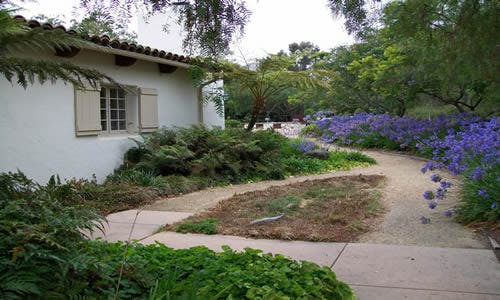History of EMID
The District was formed in 1960 by a Special Act of the California State Legislature operating pursuant to the Embarcadero Municipal Improvement District Act (Chapter 81, Stats. 1960), and subsequent amendments. The original land owners and developers were Irwin H. Harris and Roy H. Steele. The Special Act creating the Embarcadero Municipal Improvement District originally defined a voter as a landowner in the District. Thus, Harris and Steele, as the sole landowners and voters in the District, and its first Directors, authorized the sale of the original infrastructure bonds. Three of the initial four bond series, were paid in full in 1996. These bonds totaled $1,647,000 plus interest, and paid for construction of storm drainage facilities, water, and sewer projects. The fourth bond was approved for a small craft harbor, however was never issued.
Shortly after the District was formed, the California Attorney General placed the District into a Receivership in Santa Barbara Superior Court. Misuse of public funds, under the guise of construction of the Entrance Fountain, was one of the grounds the Attorney General alleged in support of having a State Court Receiver. Following the conviction of Harris and Steele, in July 1962, on several counts of grand theft, the District was administered by A. J. Bumb, Trustee in Bankruptcy. Subsequently, a large part of the property within the District was sold to Wallover, Inc. of New York, (now known as Great Universal Capital Corporation or GUCC) which remains the principal property owner within the District today.
It was not until the Board Election in 1971 that the residents began to gain some of the unique benefits of their Special District. For several years the largest landowner in the District nominated, elected and controlled the EMID Board, along with the appointed for life – Architectural Review Board. As a result of the efforts and financial contributions of the district residential property owners, through the newly formed property owners association called EPOA, a challenge to the voting provisions of the original Act was sustained in Court. The District Act was amended by the Legislature in 1971 to provide that future EMID Boards would be elected by a majority of the registered voters in the District. The first election, after the successful lawsuit, was held on November 2, 1971. Since then elections have been held on a regular basis, through the County Elections Office, and vacancies on the Board have been filled by appointment by the Board of Directors.
In 1981, through an amendment to the Enabling Legislation, the residents gained control over the Architectural Review Board. The consensus of the residents was to make the architectural review positions one year terms, appointed by the EMID board. After two trips to Sacramento by EMID board members Dan Suchman and S. David Schwartz, the District’s Enabling Act was changed to allow EMID to form EMIDAC, the new Architectural Committee.
Beginning in 1985, during development of the beachfront property, the District worked with GUCC to ensure safe and open public beach access.
In 1998 EMID purchased the 18.8 acre parcel of land known as the Tecolote Meadows, preventing further development and providing potential recreational area for residents. The land also serves as the Urban Limit Line of the City of Goleta.
After the ground breaking for the construction of the Bacara Hotel and Spa in 1999, a dispute arose with the County of Santa Barbara regarding the apportionment of the Bacara property tax. This dispute with the County was resolved by Joint Resolutions of the County and EMID, giving EMID 6% of the property taxes paid by the Bacara.
The original CC&Rs and the operating committee, EMIDAC, expired in December of 2010. Pursuant to unanimous approval by EMIDAC, a one year extension was granted. On July 24, 2011 a new CC&R document was approved by the residents. Additional amendments to the CC&Rs may be made pursuant to a 66.6% approval of all District residents or by a unanimous vote by EMID.
EMID services are primarily funded by property taxes and certain user fees. Sewer service is provided by a Joint Powers Agreement between EMID and Goleta West Sanitary District (GWSD), through which GWSD transports and treats sewage generated within the EMID and maintains and repairs the EMID owned sewer lines.
Services provided by EMID include sewer collection and transportation, parks and recreation, storm water drainage, street lighting, animal control, vector control, some limited police and fire protection authority, and such land use control as approved by the residents of EMID.
As a public local agency, EMID also serves as a bridge between residents and other government agencies.

